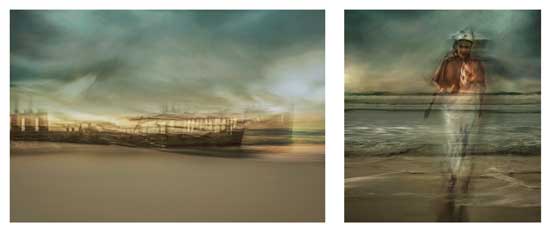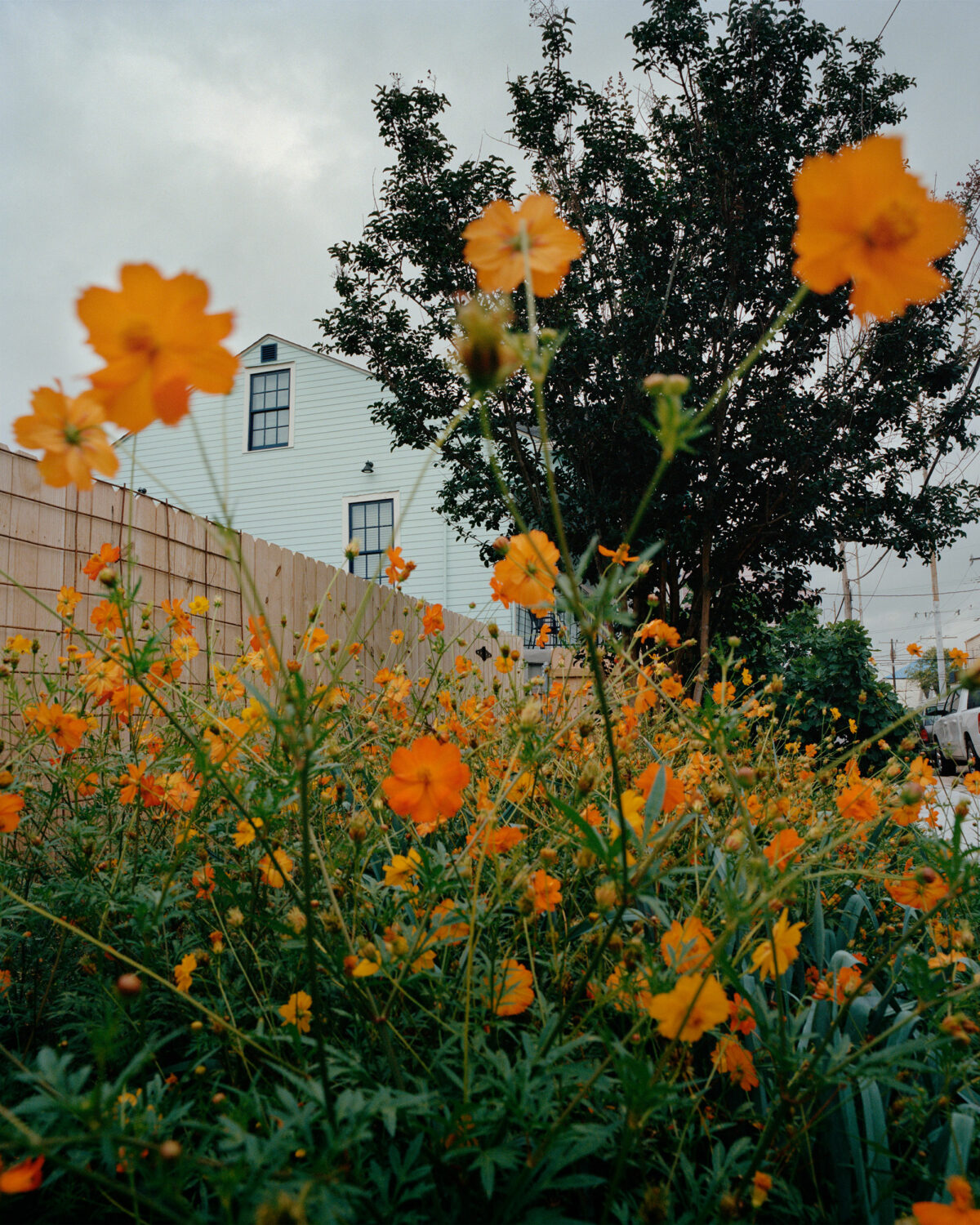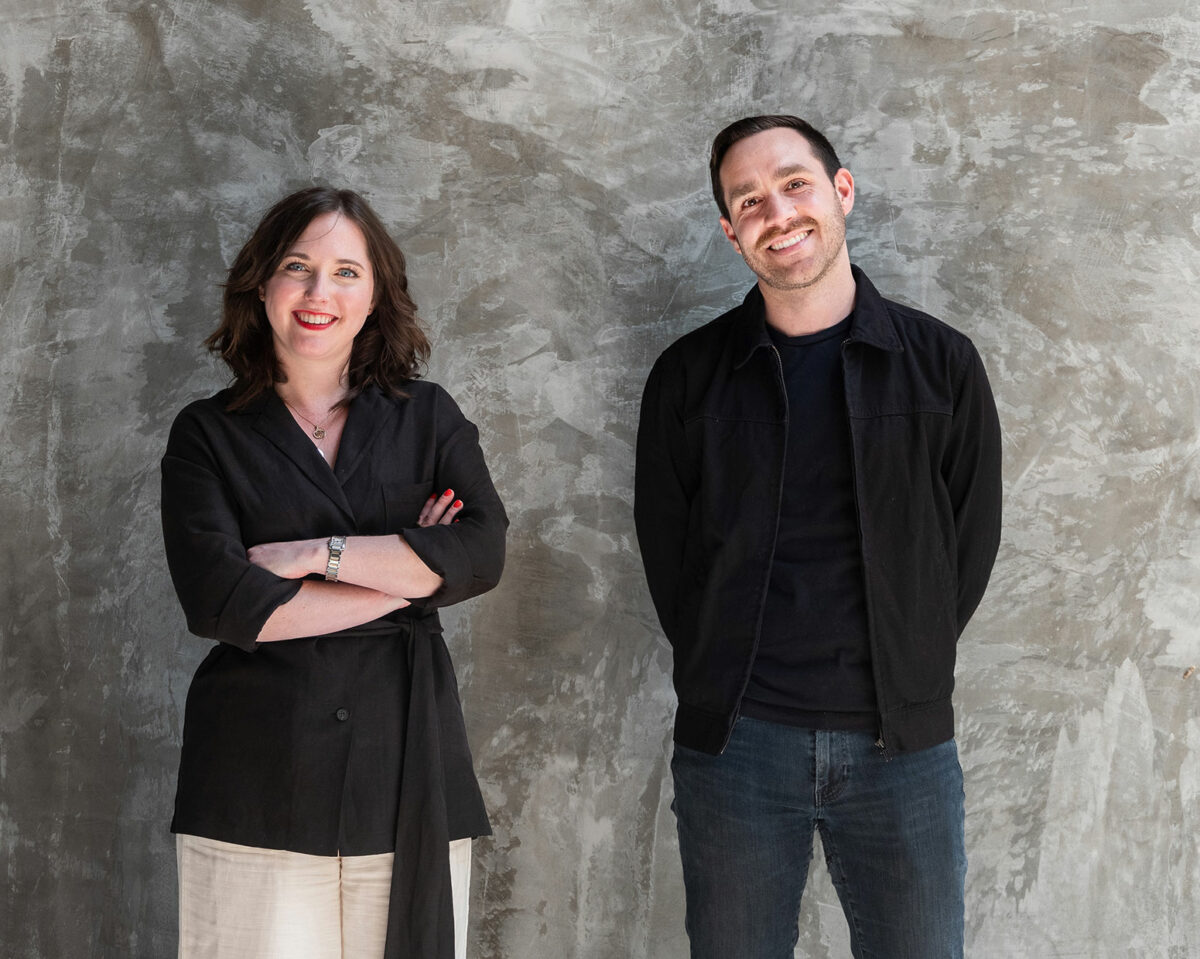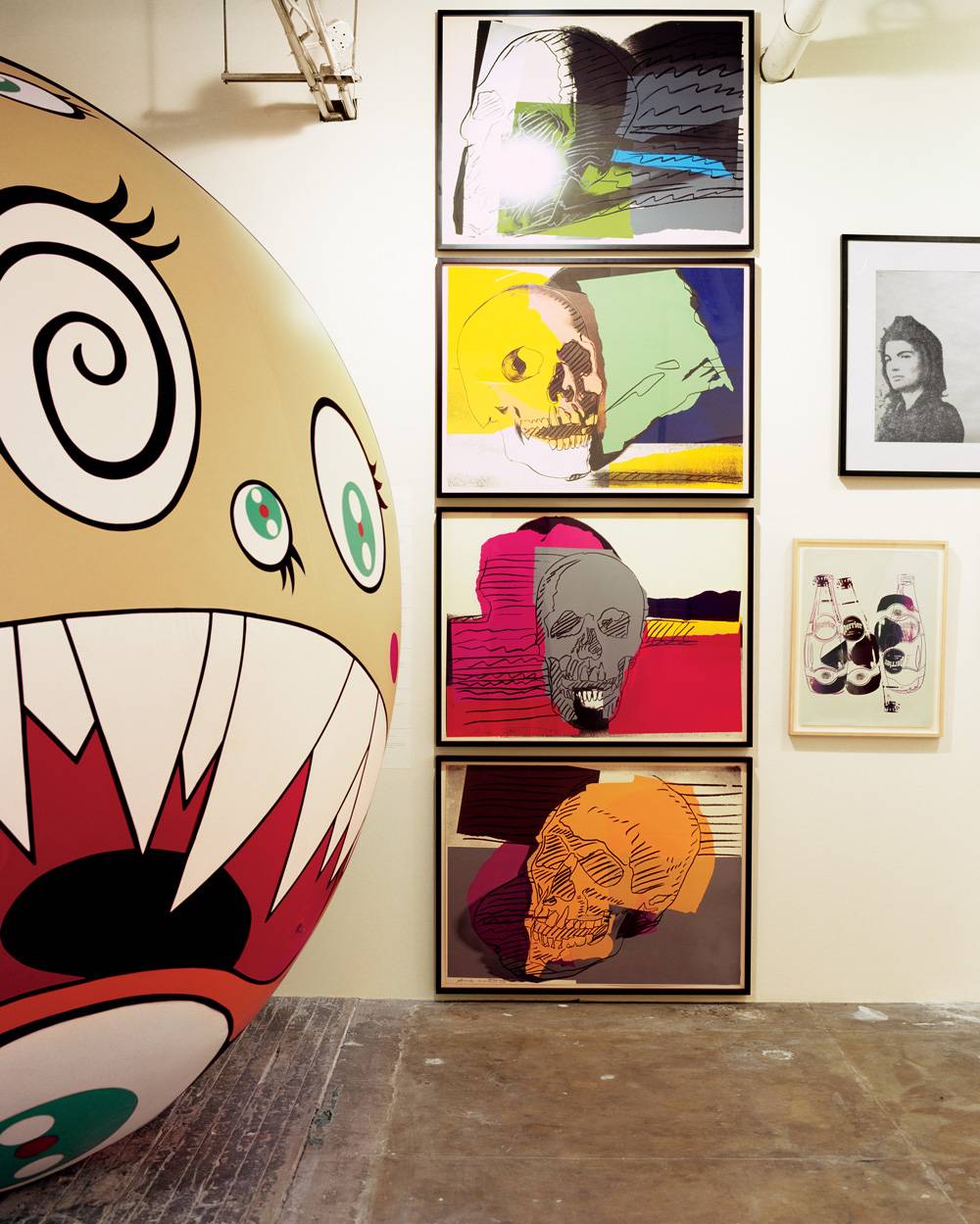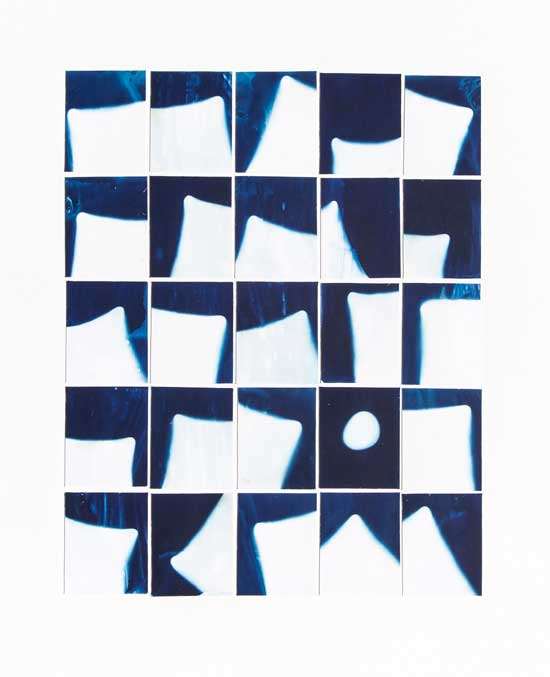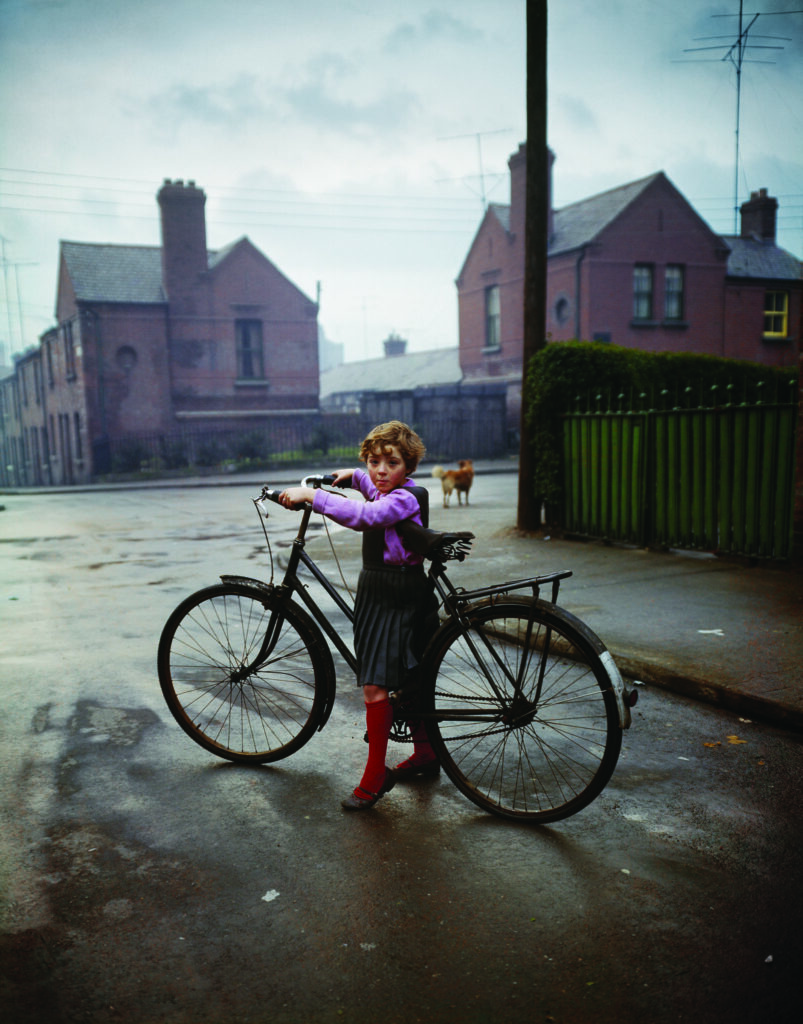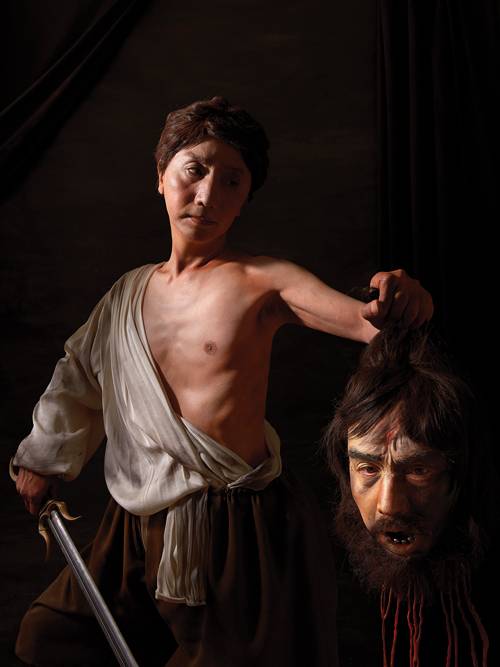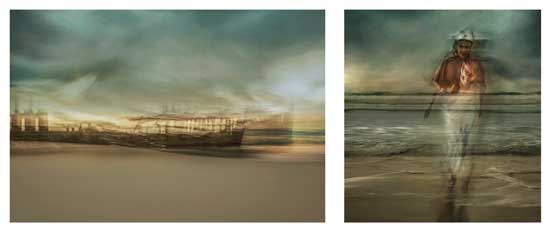

There have been times when Australian artist Tracey Moffatt has dealt with specific historic events in her work, but for her show at Tyler Rollins Fine Art, on view through February 1, she immerses viewers in a fantasy land that could be anywhere and any time. In this more poetic attempt at universality, Moffatt conveys nostalgia, pathos, and mystery with open-ended narratives that leave much to the imagination.
In a series of six diptychs titled Portals (2019), Moffatt provides a channel to memories of the past and recollections for future time travelers. The Visit, for example, includes a photograph of her current self in a red-patterned dress, blurred by movement and the light from a window, and another photograph of an Aboriginal youngster emerging from the bush, a stand-in for Moffatt’s childhood. In The Outlaw (2019), we see an image of the artist in an androgynous cowboy suit juxtaposed with a picture of a running horse, like screen captures of a Hollywood western. Moffatt, in fact, is present in every “portal,” taking on different roles. Through the minimalist strategy of a mere six pairs of photographs, she is able to suggest a wide array of narratives.
Attention should be paid to the aesthetics of these images. Through the use of movement and slow shutter speeds, she creates blurred pictures in which she appears as a ghostly apparition. She arduously printed and reprinted each photograph until she was able to achieve a painterly effect, even as the images refer to cinematic narratives. The opposite of Cartier-Bresson’s “perfect moment,” her photographs seem to transcend time.
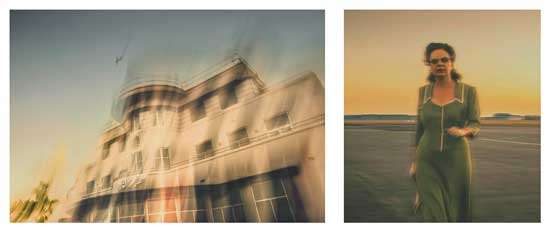

These qualities come together in the one image that is rooted in historic fact. In the diptych The Hospital Ship (2019), we see a diaphanous Moffatt, dressed as a nurse, walking away from the ocean’s shore beside a related picture of a beached vessel that seems like it is disappearing before our eyes. It is a haunting way to reconstruct the story of the hospital ship Centaur, which was bombed during WWII in Queensland, resulting in the deaths of more than 200 people. Moffatt mythologizes the event but has insisted in interviews that viewers should feel free to depart from the facts and make up their own tales of tragedy and survival.
Moffatt, who is of Aboriginal descent, is one of Australia’s most famous artists. She represented her homeland in the 2017 Venice Biennale with a series of images in a monotone brown palette that recalled 19th-century sepia photographs. Her current photographs, made in color and with an uncanny use of lighting effects, are even more vital and beautiful. Moffatt is ever experimenting, ever pushing forward, and with this concentrated show, she covers a lot of territory, both aesthetic and geographical. It whets our appetite to see what she will do next.

